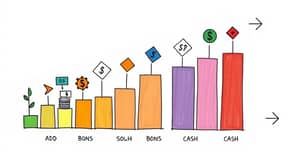
In today’s fast-paced investment environment, model portfolios offer a head start by providing pre-constructed collections of diversified investments. Designed by experts, they blend stocks, bonds, cash, real estate, and alternatives to create balanced allocations aligned with common risk profiles. However, seasoned investors know that these templates mark the beginning of a personalized journey. They invite ongoing refinement, strategic rebalancing, and tailored adjustments as goals evolve, ensuring portfolios remain relevant and effective.
Model portfolios are curated templates assembled by financial advisors or investment teams to match target objectives, risk tolerances, and time horizons. Typically composed of mutual funds or ETFs, they simplify decision-making by bundling asset classes into coherent strategies. By following these frameworks, investors bypass the complexity of constructing diversified holdings from the ground up.
At their core, model portfolios emphasize diversification to mitigate the impact of underperformance in any single asset class. They serve as blueprints—blueprints that can be fine-tuned. Whether your profile is conservative, balanced, or growth-oriented, these models offer a foundational plan that balances potential returns against acceptable risk levels.
Model portfolios deliver multiple advantages, creating efficient and consistent approaches for wealth management. They let investors focus on overarching goals rather than individual security selection, and they help advisors streamline operations across client accounts.
While model portfolios offer many perks, they are not without drawbacks. Investors may find themselves relinquishing detailed control over individual asset choices, and fees associated with advisor services can reduce net returns. It is important to approach these templates with realistic expectations about performance.
Rather than viewing a model portfolio as a static endpoint, envision it as a dynamic guide—a foundation that evolves with your financial narrative. As personal circumstances shift, whether due to a career change, new family responsibilities, or market upheavals, periodic reassessment is vital. This disciplined approach helps avoid emotional investing pitfalls and keeps you aligned with long-term objectives.
Model portfolios also complement broader financial planning efforts, freeing advisors to focus on tax optimization, retirement strategies, and legacy considerations. The framework remains intact, but the fine details adapt to each investor’s unfolding story.
Assets under management in custom model portfolios have soared in recent years, surpassing $125 billion by late 2024. That represents a remarkable 50% year-over-year growth rate. This surge owes much to digital platforms that automate rebalancing, monitor risk exposures, and deliver personalized insights at scale.
Leading firms leverage cutting-edge fintech to offer seamless model portfolio experiences. Investors benefit from mobile dashboards, real-time risk analytics, and tailored recommendations that keep pace with changing market landscapes.
To harness the full potential of model portfolios, integrate them into a personalized roadmap. Regular checkpoints and targeted tweaks ensure your strategy stays on course.
Model portfolios shine as powerful starting frameworks, equipping investors with expert-designed allocations and structured discipline. Yet they truly excel when viewed as living documents—starting points that demand ongoing attention and refinement. By embracing periodic reviews, leveraging technology, and customizing allocations to your personal story, you transform a simple template into a dynamic engine for wealth creation. Remember: the finish line is not a one-size-fits-all endpoint but an ever-evolving horizon shaped by your aspirations, milestones, and the market’s unfolding chapters.
References













